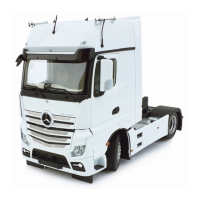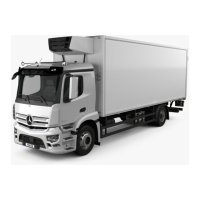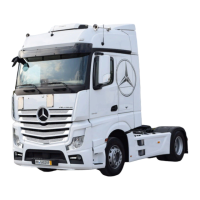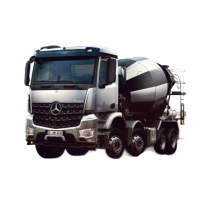You can find further information regarding
tyres at specialist tyre retailers, at qualified
specialist workshops or at any Mercedes-
Benz Service Centre.
Replacing the tyres and retreaded
tyres
Replacing tyres
If replacing the standard tyres of your vehicle,
use only the tyre and wheel rim sizes
approved
for your vehicle type. A tyre dealer,
a qualified specialist workshop or any
Mercedes-Benz Service Centre will be able to
provide further information.
After replacing your tyres, carry with you the
vehicle's type approval for the new tyre and
wheel rim size as well as the manufacturer's
certification showing that the tyres may be
used on the vehicle. Observe the legal
requirements for the country you are cur-
rently in. Any Mercedes-Benz Service Centre
can provide information on obtaining a man-
ufacturer's certificate.
After replacing your tyres, it may be neces-
sary for adjustments to be made to the con-
trol unit modules. If necessary, have these
adjustments carried out at a qualified spe-
cialist workshop.
Vehicles with electric power steering: if
you change the mechanical axle stops, e.g.
during tyre replacement, have the electric
power steering taught in at a qualified spe-
cialist workshop.
Retreaded tyres
Mercedes-Benz recommends that you only
use tyres and wheels which have been tested
and approved by Mercedes-Benz specifically
for your vehicle.
Tyre pressures
Important safety notes
G
WARNING
Underinflated or overinflated tyres pose the
following risks:
R
the tyres may burst, especially as the load
and vehicle speed increase.
R
the tyres may wear excessively and/or
unevenly, which may greatly impair tyre
traction.
R
the
driving characteristics, as well as steer-
ing and braking, may be greatly impaired.
There is a risk of an accident.
Observe the recommended tyre pressure and
check the tyre pressure of all the tyres includ-
ing the spare wheel:
R
at least once a month
R
when the load changes
R
before embarking on a longer journey
R
for changed operating conditions, e.g. off-
road driving.
If necessary, correct the tyre pressure.
G
WARNING
The tyre temperature and pressure increase
when the vehicle is in motion. Reducing the
pressure of warm tyres leads to a tyre pres-
sure that is too low when the tyres have
cooled. If the tyre pressure is too low, it may
cause the tyre to burst, especially when the
load or speed increases. There is a risk of an
accident.
You should never reduce the pressure of
warm tyres. Observe the specified tyre pres-
sure.
For
every 10 † change in air temperature, the
tyre pressure changes by around 30 to 40 kPa
(0.3 to 0.4 bar/4.4 to 5.8 psi). Bear this tem-
perature-related change in tyre pressure in
mind when checking tyre pressures indoors,
where the temperature may be higher than
the outside temperature.
400
Tyre pressures
Wheels and tyres

